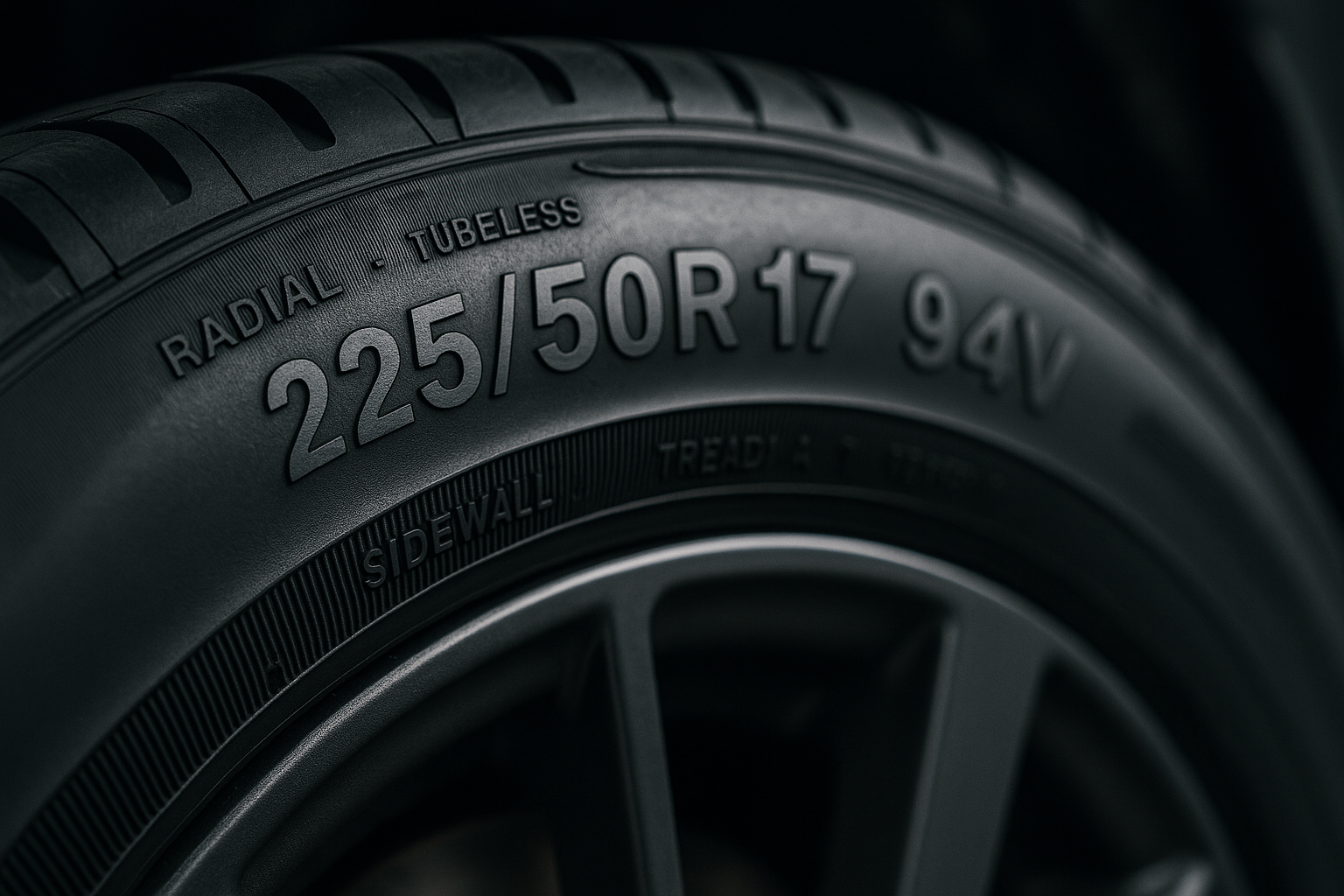When shopping for new tires, the codes stamped on the sidewall can look like alphabet soup. But knowing how to read a tire size guide and interpret tire markings is essential for choosing the right fit. Equally important is understanding the speed rating—the maximum sustained speed a tire can safely handle. In this article, we’ll break down the most common tire codes and explain how speed ratings impact performance and safety.
1. Decoding the Tire Size Code
A typical passenger‑car tire code looks like this: P205/60R16 92H. Each segment carries specific information:
- P – Tire type. “P” stands for passenger car; “LT” for light truck.
- 205 – Section width in millimeters (tire’s cross‑section from sidewall to sidewall).
- 60 – Aspect ratio (height of sidewall as a percentage of width). Here, sidewall height = 60% of 205 mm.
- R – Construction type (“R” for radial).
- 16 – Wheel diameter in inches.
- 92 – Load index (maximum load capacity; check load‑index charts for pounds or kilograms).
- H – Speed rating (see next section).
Why Tire Size Matters
Choosing the correct size ensures your speedometer reads accurately, maintains proper steering response, and avoids rubbing against suspension components. Always refer to your vehicle owner’s manual or door‑jamb placard for the manufacturer’s recommended sizes.
2. What Is a Speed Rating?
The speed rating is a standardized letter—A through Z—that indicates the maximum sustained speed a tire can withstand under controlled conditions. For example:
- S (112 mph / 180 kph): Common on family sedans and minivans.
- H (130 mph / 210 kph): Often found on sports sedans and coupes.
- V (149 mph / 240 kph): Typical for performance‑oriented vehicles.
- W (168 mph / 270 kph) & Y (186 mph / 300 kph): High‑performance tires for sports cars.
Note that speed ratings do not mean you should drive at those speeds—always obey posted limits and adjust for road conditions.
Speed Rating vs. Recommended Speed
While the tire may be rated for high speeds, automakers and tire manufacturers recommend driving well below that threshold to allow safety margins for heat buildup, wear, and varying road conditions.
3. Locating Your Tire Speed Rating
Your tire’s speed rating is the last character in the size code printed on the sidewall. For instance, in P205/60R16 92H, the “H” tells you the speed capability. If you don’t see it, check the owner’s manual or the tire placard:
- Driver’s side door jamb
- Fuel‑fill door
- Inside the glovebox door
Ensure all four tires share the same speed rating to maintain consistent handling and performance.
4. Why Speed Ratings Matter for Safety & Performance
Speed ratings are determined through rigorous laboratory testing under specific load and inflation conditions. Real‑world factors like under‑inflation, overloading, and wear can reduce actual speed capability. Here’s why you should pay attention:
- Handling & Stability: Higher‑rated tires often have stiffer sidewalls, improving cornering response.
- Heat Resistance: Tires generate heat at speed—higher ratings ensure better heat dissipation.
- Load Capacity: Speed and load are related—exceeding recommended speeds under heavy load can overstrain the tire.
Common Pitfalls
Mixing tires with different speed ratings can lead to uneven performance, especially in emergency maneuvers. Never downgrade below the manufacturer’s recommended rating to save cost—it compromises safety.
5. Tips for Choosing the Right Tires
- Consult Your Manual: Always start with the vehicle manufacturer’s recommendations.
- Match Ratings: Keep speed rating and load index consistent across all tires.
- Consider Your Driving Style: If you regularly tow, accelerate hard, or drive fast on highways, opt for a higher rating within your vehicle’s tolerance.
- Check for Updates: Tire technology evolves—review seasonal or performance upgrades periodically.
Conclusion
Understanding a tire size guide and correctly reading tire markings—including the speed rating—is fundamental to vehicle safety and performance. Always choose the appropriate size, load index, and speed rating for your car, and follow maintenance best practices for a smooth, secure ride.
